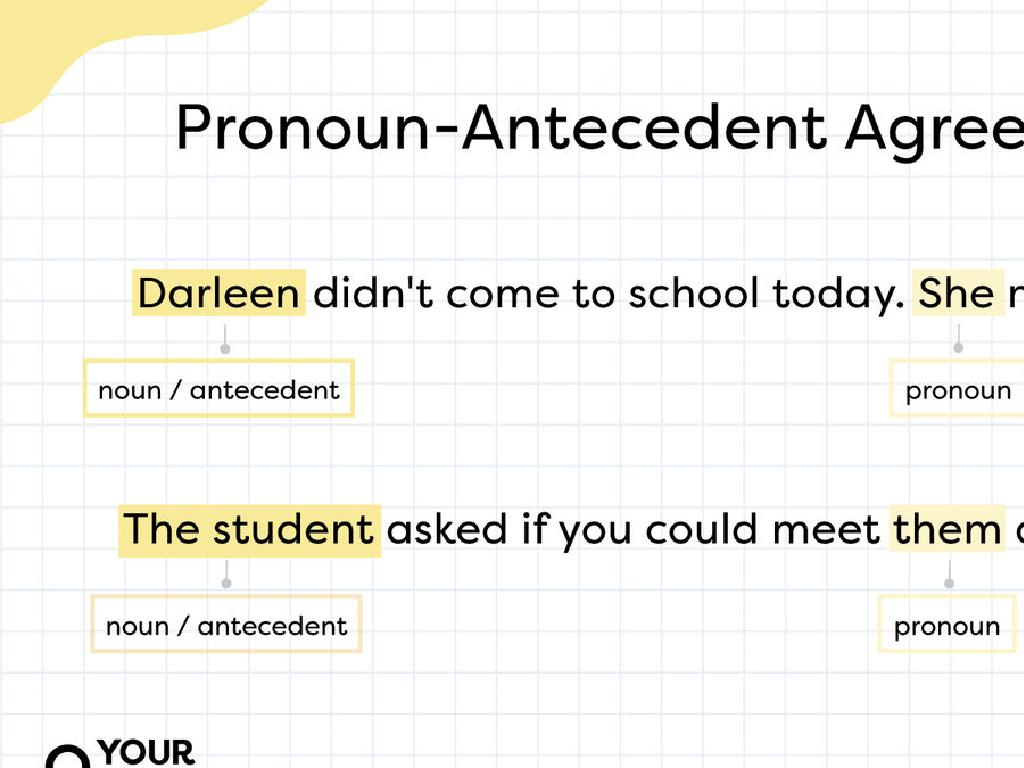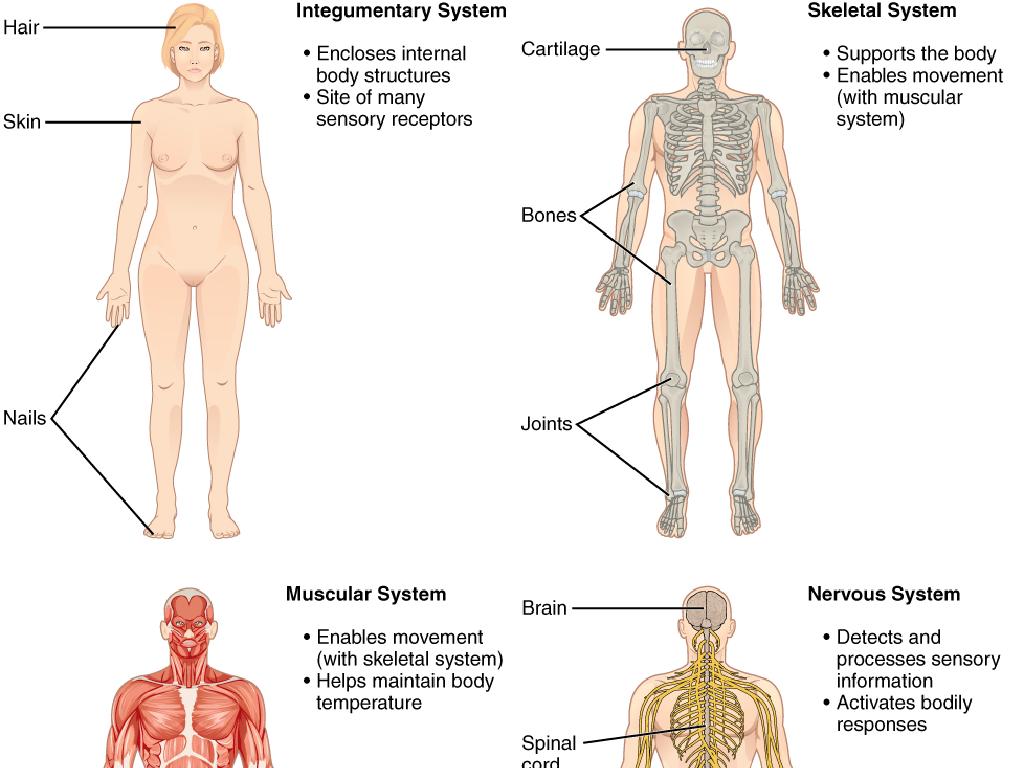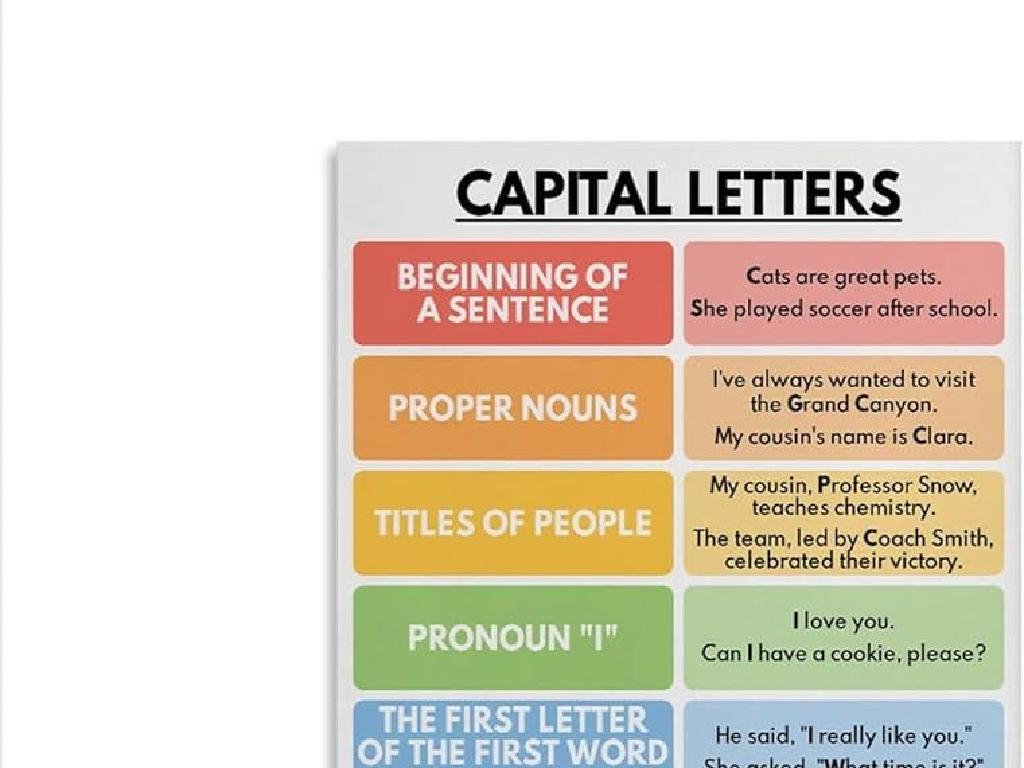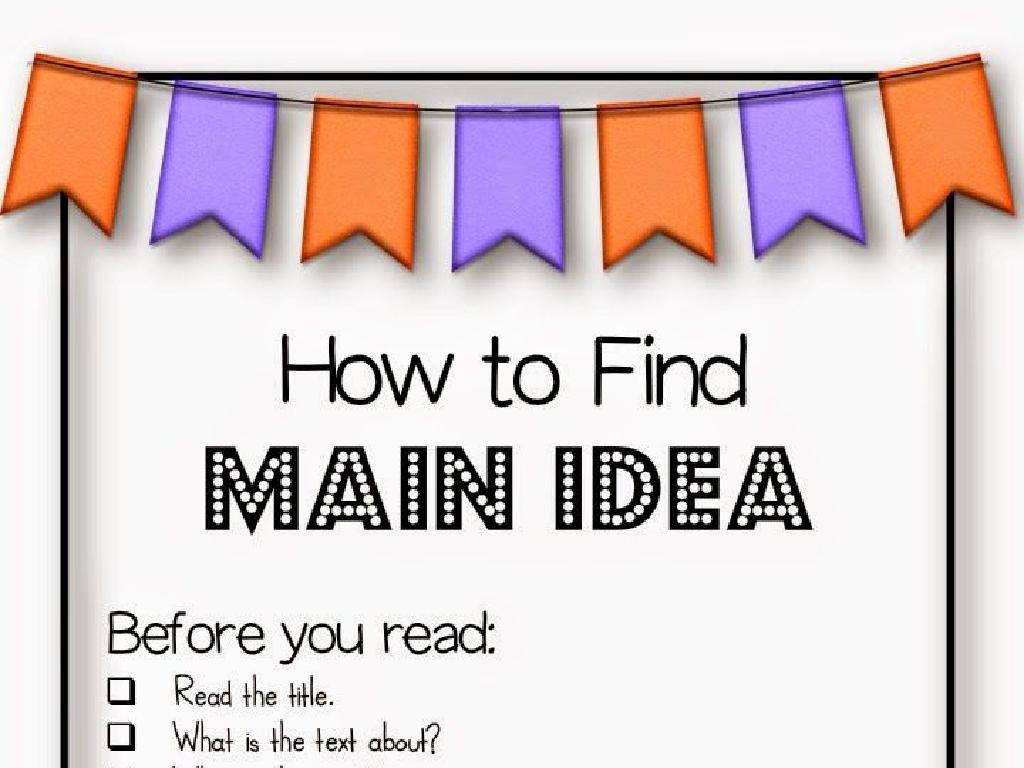Compare Mythological Illustrations
Subject: Language arts
Grade: Third grade
Topic: Visual Elements
Please LOG IN to download the presentation. Access is available to registered users only.
View More Content
Exploring Myths Through Pictures
– Discovering mythological stories
– Pictures narrate without words
– Look at how images show action, emotion, and setting
– Visual elements in illustrations
– Colors, shapes, lines, and texture help create a picture’s story
– Recognizing elements in myths
– Find visual elements in myth pictures, like a hero’s bright armor
|
This slide introduces students to the fascinating intersection of mythology and visual storytelling. Begin by explaining that myths are ancient stories that often involve gods, heroes, and magical creatures. Illustrations in myths help bring these stories to life without the need for words. Discuss the key visual elements such as color, shape, line, and texture, and how they contribute to the narrative of the illustration. Encourage students to think about how these elements can indicate different aspects of the story, such as a character’s emotions or the setting of the myth. Use examples of mythological illustrations to highlight these points. Prepare to have students identify and discuss these elements in various mythological pictures in the following class.
Exploring Myths and Their Meanings
– What’s a myth? Let’s find out!
– A myth is like a very old story that teaches us something important.
– Myths have gods and heroes
– Stories with powerful beings and brave people doing great things.
– Magical creatures in myths
– Think of unicorns or dragons! They make myths exciting.
– Myths explain our world
– Myths were like science long ago, helping people understand life.
|
This slide introduces students to the concept of myths, which are more than just stories; they are narratives that have been passed down through generations and often hold significant cultural importance. Myths typically include characters like gods and heroes who embark on adventures or face challenges, often alongside or against magical creatures. These stories were ancient people’s way of explaining natural phenomena, human behavior, and the mysteries of the universe. Encourage the students to think about what lessons myths might teach us and how they make sense of the world. Ask them to consider myths they may already know and what those stories explain.
Exploring Visual Elements in Mythology
– Visual elements in art
– Color, shape, line, texture, space, form
– How elements create meaning
– They add emotion and context to stories
– Examining mythological examples
– Look at examples from myths to understand
– Discuss our favorite illustrations
|
This slide introduces students to the basic visual elements that make up mythological illustrations. Explain each element: color can show mood, shape can represent ideas, lines can direct attention, texture can add realism, space can create depth, and form can bring life to characters. Use mythological examples like dragons (form) or a golden apple (color). Encourage students to think about what feelings or ideas these elements convey in the stories they represent. After discussing, ask students to share which mythological illustration is their favorite and why, focusing on the visual elements.
Exploring Mythological Stories Through Pictures
– Each picture has its own story
– Spot the visual elements
– Look for color, shapes, and characters
– Visuals impact the story’s mood
– Bright colors can mean happiness, dark may mean scary
– Discuss how pictures differ
|
This slide is aimed at helping third-grade students understand how illustrations contribute to storytelling, especially in mythology. Start by explaining that each mythological illustration is unique and tells a different story. Encourage the students to identify and name the visual elements they see, such as colors, shapes, characters, and actions. Discuss how these elements can change the feeling or mood of the story, for example, how bright colors might make a scene feel happy or dark colors might make it seem scary. Finally, have a class discussion on how different illustrations of the same myth might tell the story in different ways, and what elements lead to those differences.
Color and Mood in Mythology
– Colors evoke emotions
– Like how yellow can make us feel sunny and bright!
– Warm colors for joy or anger
– Red might show a hero’s courage or a dragon’s fury
– Cool colors for sadness or peace
– Blue can be the calm ocean or a sad goodbye
– Mythological colors and feelings
– What moods do the colors in a myth’s pictures create?
|
This slide introduces the concept of how colors influence mood and can be used to convey emotions in mythological illustrations. Explain that artists choose colors deliberately to make us feel a certain way when we look at their pictures. Warm colors like red, orange, and yellow can make us think of emotions such as happiness or anger, while cool colors like blue and green might make us feel calm or sad. Use examples from familiar myths or children’s stories and ask students to think about how different colors make them feel. Encourage them to discuss the mood created by the colors in illustrations of myths they have read or seen.
Shape and Symbolism in Mythology
– Shapes symbolize ideas
– Like how emojis express feelings, shapes in myths can represent big ideas.
– Circles for unity or eternity
– A circle has no end, like a ring. It can show love that lasts forever.
– Squares mean stability
– A square has equal sides, like a game board. It means rules and fairness.
– Shapes tell stories in myths
|
This slide introduces students to the concept of symbolism in shapes within mythological illustrations. Explain that just like colors and objects, shapes can carry meanings beyond their physical appearance. Circles, often seen in illustrations of the world or wreaths, can represent concepts like unity, wholeness, or eternity due to their endless nature. Squares or rectangles, seen in structures or frames, can suggest stability, order, and reliability because of their solid foundations and equal sides. Encourage students to think about what feelings or ideas they associate with these shapes and to look for these shapes in stories or pictures related to mythology. This will help them understand how visual elements contribute to storytelling.
Exploring Lines in Mythological Art
– Lines create paths for our eyes
– Horizontal lines mean calmness
– Like the calm sea in a painting of Poseidon
– Vertical lines show strength
– Like tall trees growing in a forest scene
– Lines can show movement or growth
– Artists use lines to make a still image feel alive
|
This slide introduces students to the concept of how lines in illustrations can convey different feelings and ideas. Explain that lines are a powerful element in art that guide our eyes and can show movement or direction. Horizontal lines often represent calmness or rest, which can be seen in mythological illustrations depicting tranquil scenes. Vertical lines can suggest strength or growth, such as a hero standing tall. Encourage students to observe these lines in various mythological illustrations and discuss what feelings or ideas the lines convey. Have them draw simple scenes using horizontal and vertical lines to express different emotions or actions.
Texture in Mythological Illustrations
– Texture brings depth to pictures
– Like how 3D looks more real than 2D
– Rough textures show toughness
– Dragons might have rough scales
– Smooth textures mean softness
– A unicorn might have a smooth coat
– Textures make myths feel real
|
This slide introduces the concept of texture in art and how it can be used to convey different feelings or ideas in mythological illustrations. Texture in illustrations can make images seem more lifelike and tangible. Rough textures, like the scales of a dragon, can give a sense of toughness or harshness, while smooth textures, such as the coat of a unicorn, can suggest softness or gentleness. Encourage students to touch different materials and think about how they might represent these textures in their own drawings. Ask them to imagine the texture of creatures and objects in myths and how these textures can help tell the story or convey the character’s qualities.
Activity Time: Create Your Myth!
– Unleash your creativity
– Draw a mythological creature
– Imagine a creature with parts from different animals
– Use visual elements in your drawing
– Think about color, shape, and texture
– Share your myth with the class
– Tell us your creature’s story and powers
|
This activity is designed to foster creativity and understanding of visual elements in storytelling. Encourage students to think outside the box and create a unique mythological creature by combining parts from various animals. Discuss visual elements such as color, shape, and texture to help them bring their creature to life in their illustration. Once they have completed their drawings, create a supportive environment for them to share their creature’s story, powers, and the inspiration behind it with the class. This will help them practice their presentation skills and learn from each other’s creativity. Provide examples of mythological creatures from different cultures to inspire them.
Bringing Myths to Life with Visuals
– Congratulations on your myths!
– Visuals animate our stories
– Pictures and drawings add excitement and details to the tales we tell
– Practice makes perfect
– Keep imagining new adventures
– Your creativity can take you on endless journeys in storytelling
|
This slide is a celebratory conclusion for the students who have worked on creating their own myths. It emphasizes the importance of visual elements in storytelling, encouraging students to continue practicing their skills. Visuals such as illustrations can turn text into vivid scenes that captivate readers and listeners. Remind students that their imagination is a powerful tool for creating engaging stories and that they should continue to explore and develop their creative abilities. Celebrate their efforts and encourage them to keep practicing and using their imagination to make their stories even more compelling.





